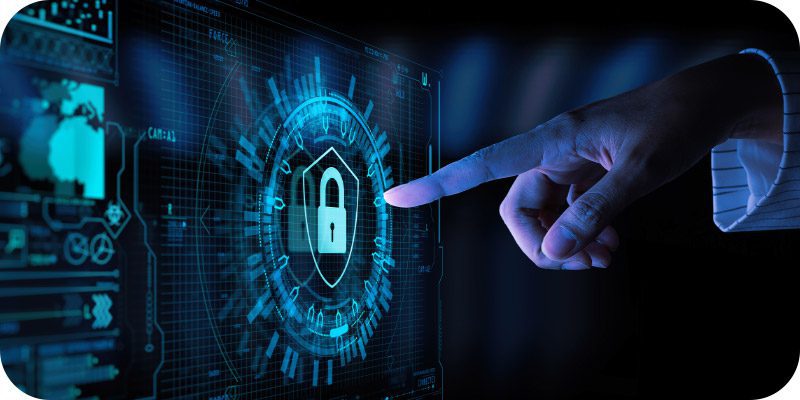3 Security Features to Protect Your ERP Data


Security features protecting your ERP data is not a topic that should be taken lightly. Having cybersecurity should become (if it isn’t already) a key priority in your current and future plans and strategies. Often, businesses fail to enact proper cybersecurity because they feel that it detracts or disrupts their workflows or processes. However, not having cybersecurity places your organization at extreme risk—and a cyber attack can cause far more disruption than any solution.
According to Ping Identity, 81 percent of consumers would stop engaging with a brand online after a data breach. Moreover, 63 percent of consumers believe companies are responsible for protecting their data. The stakes have never been higher.
In light of this, we sat down with Solutions Review lead Cybersecurity Editor, Ben Canner, to discuss the importance of protecting your ERP data, and three security features every organization should have in order to do so.
Widget not in any sidebars
What tends to be the ideal target for cybercriminals?
This can depend on the company hackers and cybercriminals target. Usually, criminals look for financial information or for some kind of direct payoff. For example, they could try funneling funds directly into anonymous accounts or hold your entire IT infrastructure hostage via ransomware.
However, what cybercriminals find valuable at any given time can prove difficult to predict. Reams of credit card numbers only sell for a few bucks on the digital black market (The Dark Web). Meanwhile, medical and patient information could sell for hundreds of dollars a piece. In fact, any sort of personally identifying information (PII) could entice malicious actors both inside and outside your enterprise. Any personally identifying information could be used to facilitate future cyberattacks, whether by using it to guess passwords, conduct spear phishing attacks, or simply sell it to the unscrupulous.
In more practical terms, hackers target the low hanging fruits. Enterprises and organizations with strong cybersecurity protections ironically tend to deal with fewer cyberattacks than businesses with no cybersecurity. As such, hackers also tend to target smaller businesses more than global enterprises, since the former rarely have sufficient cybersecurity. Worse, small businesses often end up shuttered in the aftermath of data breaches—the fees and lost business overwhelm them more than large businesses.
Additionally, hackers target databases (especially misconfigured databases with no authentication protections), and other vulnerabilities like applications, ports, and authentication portals. What matters is that the attack vector is relatively unmonitored and can help the attacker gain more access to the network.
How can you reduce the likelihood of breaches and cyber attacks (say on an ERP system?)
First, your business needs strong authentication through identity and access management. Every business process, whether regulated by ERP solutions or not, starts with an employee logging in to their account. Hackers can and will bypass, circumvent or otherwise crack password-only authentication portals and exploit the access for their own gain.
Further, if your enterprise has privileged users or superusers, hackers want their credentials more than anything. The damage that privileged access can cause in the wrong hands—and the potential payoff that can create—is incalculable.
Also, you need to have sufficient monitoring over all of the business processes and the users involved in those processes. SIEM solutions can help keep watch through user and entity behavioral analysis, which can establish baselines for users, applications, databases, and more. If a business process becomes exploited by a hacker, this solution can alert your IT security team of it for faster remediation.
Finally, ERP seekers should also consider Security Orchestration, Automation, and Response (SOAR). These emphasize business processes and automation, which helps fit cybersecurity into your current workflows.
3 Security Features to Protect ERP Data
- Multifactor Authentication. It all comes down to stronger authentication. The more factors between the access request and the business process or database, the more secure it is from external attackers.
- Behavioral Monitoring. This applies to both human users and to nonhuman actors like applications and databases. This makes sure everyone acts in an unexpected manner following proper workflows and business processes. If they don’t, then you need to investigate.
- Automation. Your ERP system needs to conduct its business processes with minimal interruption, and most next-gen cybersecurity solutions emphasize performing as much of their activities as possible without direct human interaction. It helps speed detection and remediation when threats are detected.
If businesses think that they’re ERP system may have been breached (or may be very soon), how can they identify their ERP vulnerabilities?
First, you need an incident response plan in place. We cannot overstate the importance of an incident response plan; this helps your entire enterprise detect and respond to threats in a timely and organized manner. By having one (practised, planned, and regularly drilled of course) you can cut down the dwell time of digital threats and mitigate their overall impact. Additionally, it can help you identify vulnerabilities in its ERP systems.
Also, enterprises should engage in regular threat hunting and security monitoring to discover any problems lingering on the network.
Finally, your enterprise should patch your ERP solution as early as possible every time a new update becomes available. These often contain crucial security information without which your system may be left vulnerable.
Looking for more? Download our ERP Buyers Guide for free to compare the top-24 products available on the market with full page vendor profiles, key capabilities, an ERP software market overview, our bottom line analysis, and questions for prospective buyers.
And don’t forget to follow us on Twitter, Facebook and LinkedIn for all the latest in the ERP space!


























